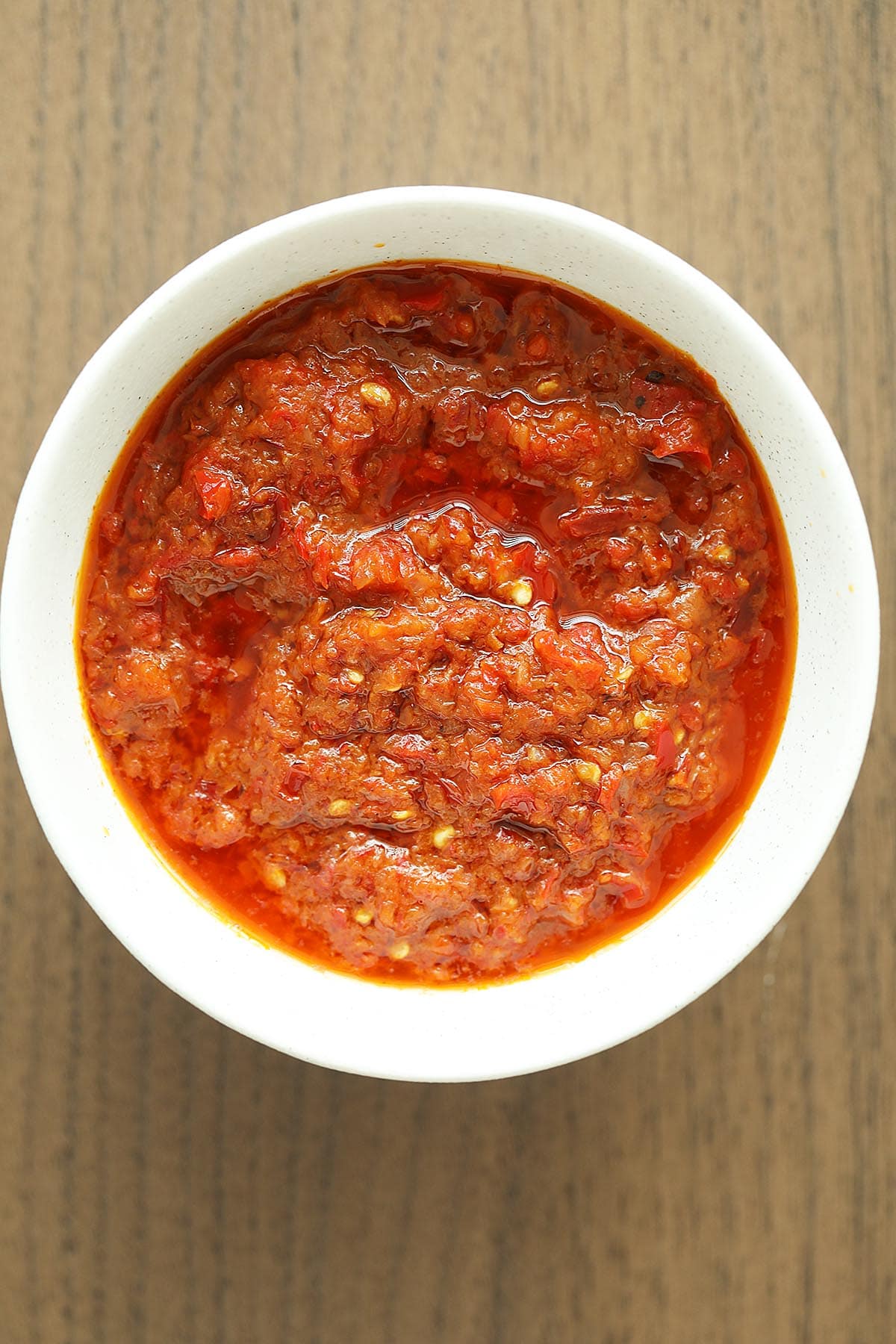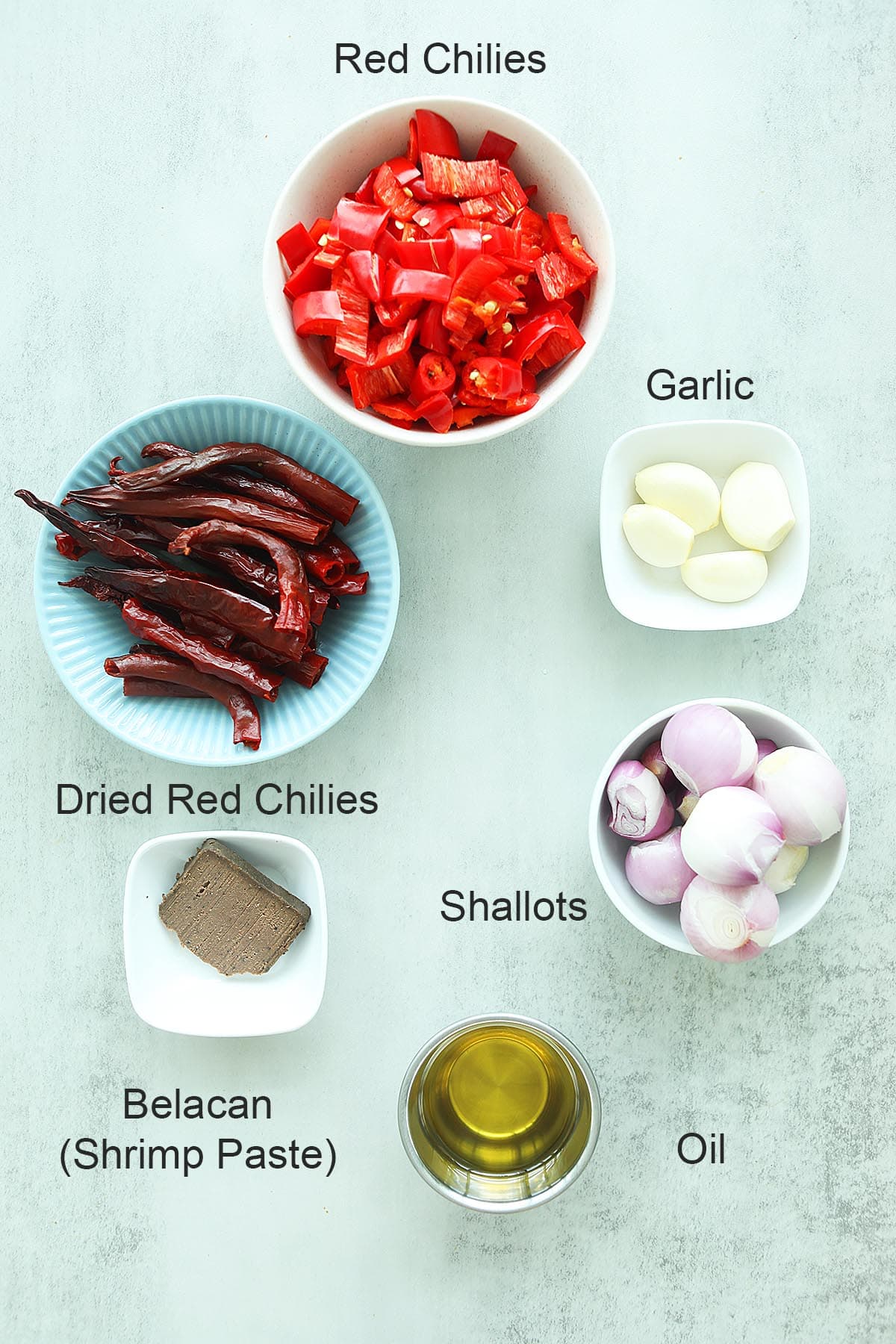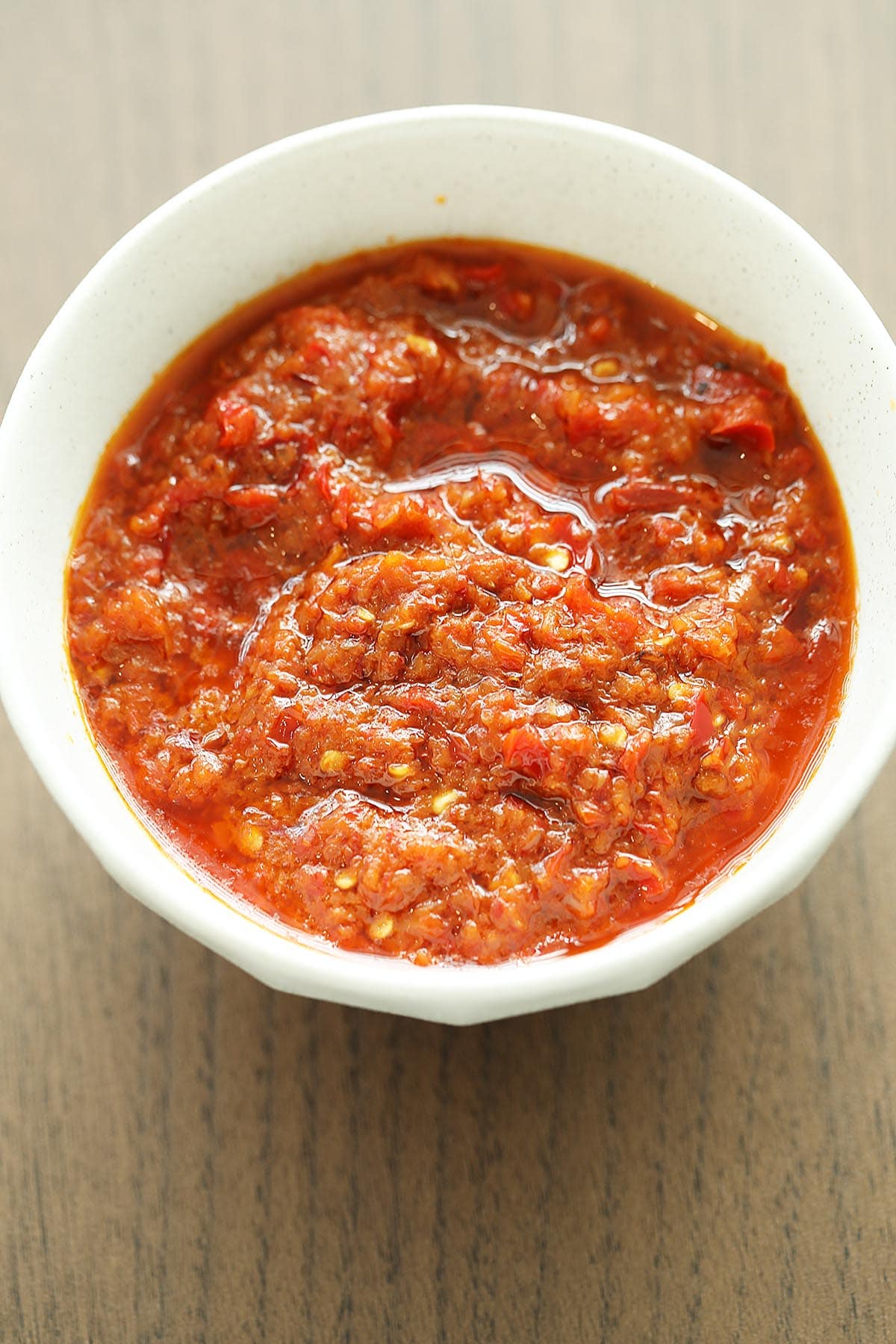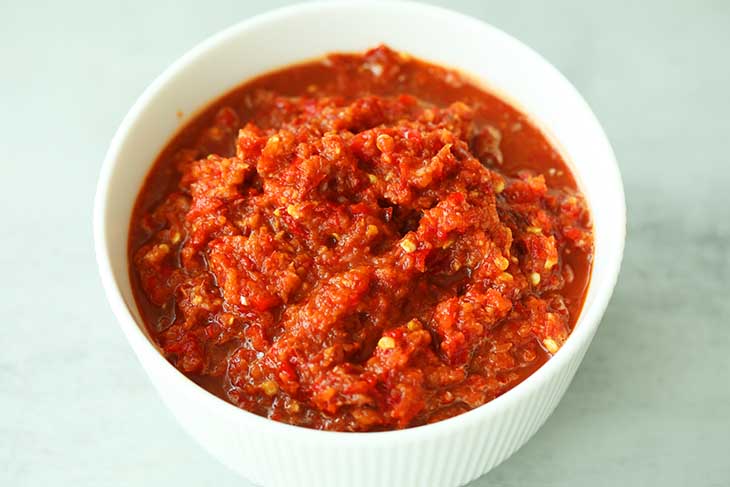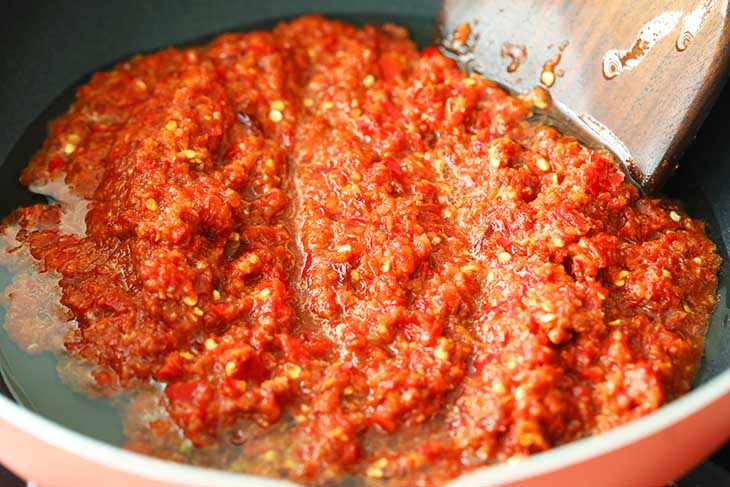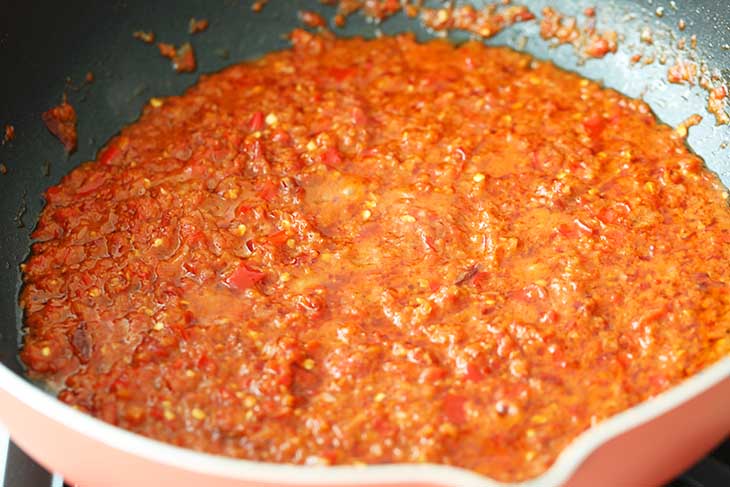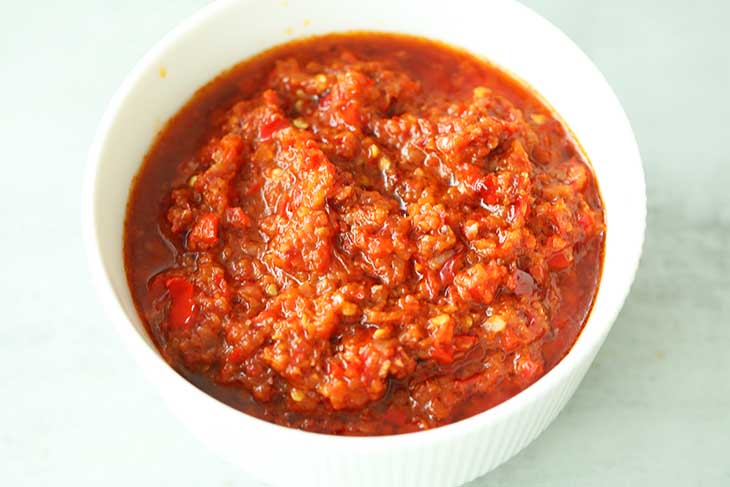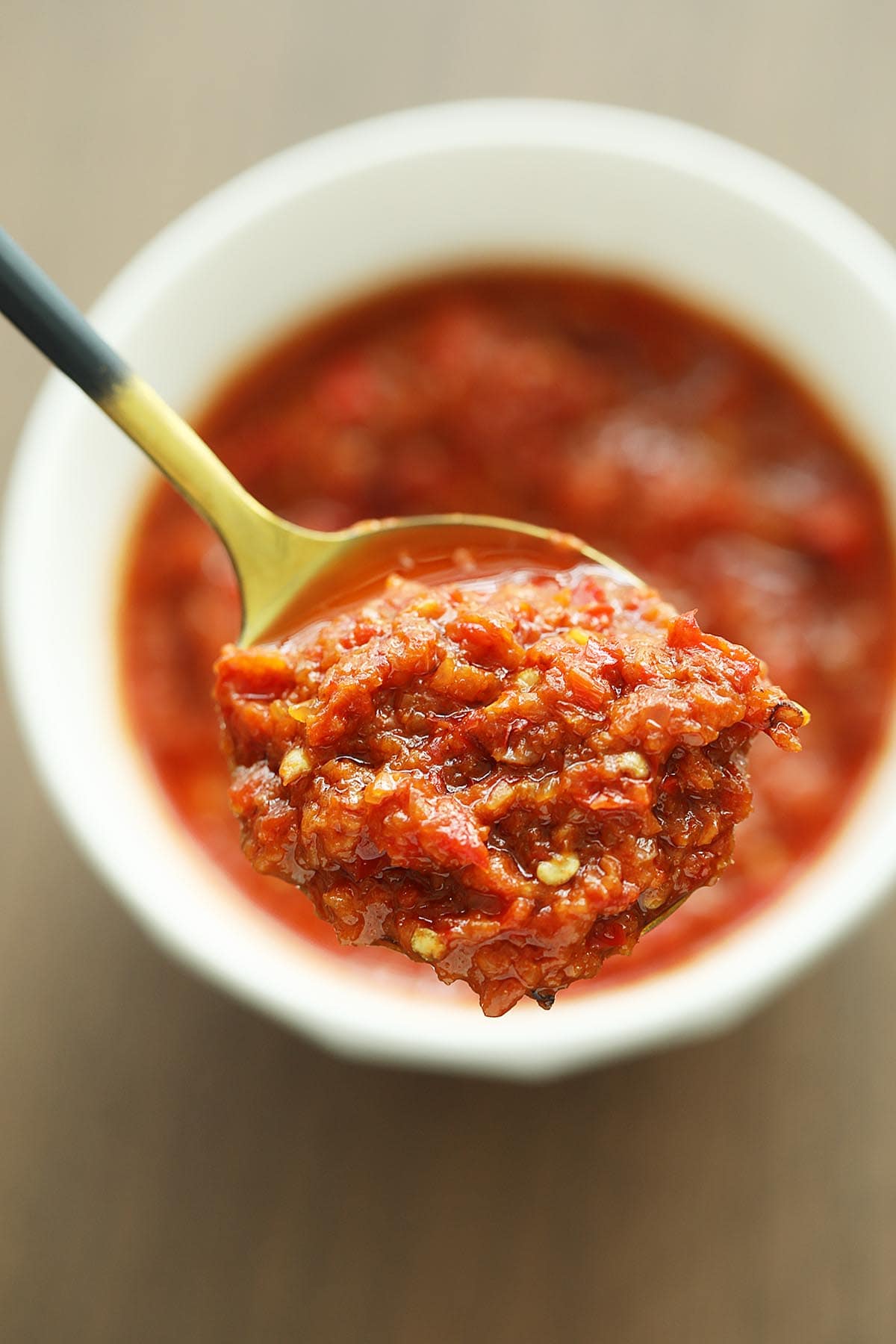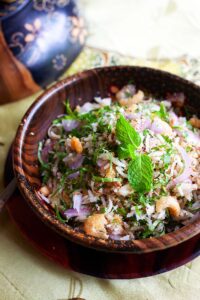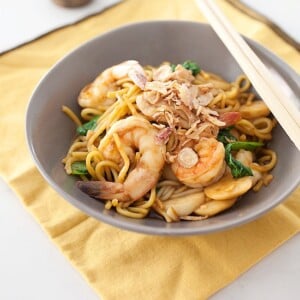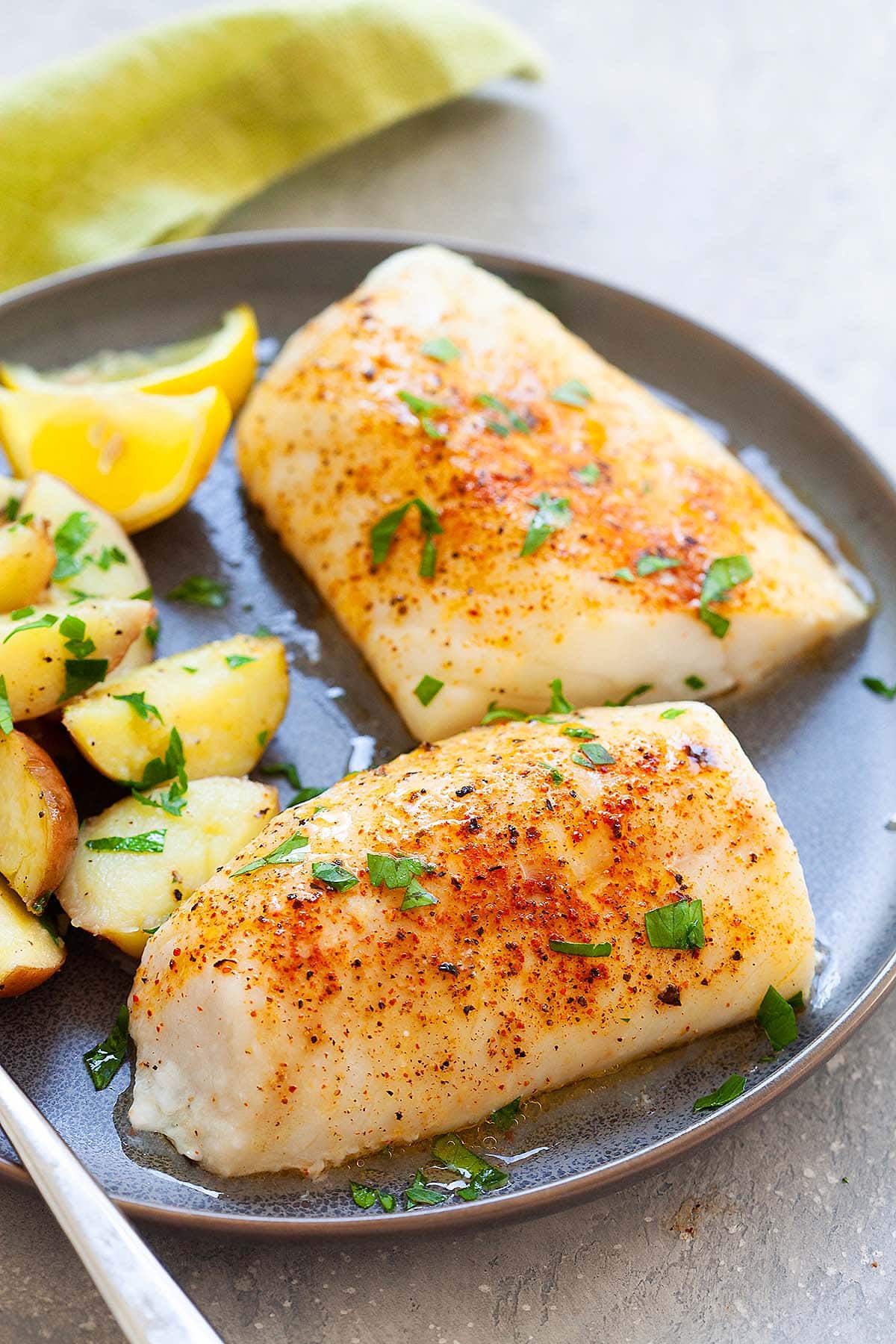Published Jun 23, 2024 Updated Aug 12, 2024
What Is Sambal
Sambal is a versatile and spicy condiment commonly found in Southeast Asian cuisine, particularly in countries like Malaysia, Indonesia, and Singapore. It typically consists of chili peppers as the main ingredient, which are blended or pounded into a spice paste with various other ingredients such as garlic, shallots, shrimp paste (belacan). Salt, sugar or other seasonings may be added depending on the recipe.
There are many variations of sambal, each with its own unique flavor profile and level of spiciness. It can range from mild to extremely hot, depending on the types of chili peppers used. Thai chilies or bird’s eye chilies are added to increase the heat level.
Traditionally, sambal in Malaysia is prepared fresh or purchased ready-made from local wet markets and used immediately in cooking. In the US, I prefer to make sambal into a paste that I can conveniently store in the refrigerator and use as needed. Using more dried chilies in my sambal recipe helps extend its shelf life. The fresh red chilies give a nice red color as dried red chilies look duller in color.
Simply put, sambal is the heart and soul of Malaysian cooking. It’s what gives authentic Malaysian dishes their bold, spicy flavor—you can’t do without it!
Sambal Main Ingredients
My recipe calls for the following ingredients main ingredients:
Fresh red chilies – adds vibrant red colors to sambal, it also tames down the heat level as fresh red chilies are less spicy as dried red chilies. Dried red chilies – the heat level comes from dried red chilies. I like to balance my sambal with a combination of fresh and dried red chilies, for the best texture and flavor profile. Shallots – this is quintessential in any sambal recipe. If you cannot find shallots, you may use red onions. Garlic – even though it’s optional, I like to use some garlic in my sambal recipe for extra garlicky note. Belacan or Malaysian shrimp paste – the umami bomb in Malaysian sambal. A sambal is not authentic without pungent belacan. Oil – oil is essential in Malaysian cooking to sauté or “tumis” the sambal until the oil separates from the paste, a process known as “pecah minyak” in Malay language. This step is crucial as it intensifies the flavors and ensures the sambal is fully cooked, resulting in what is known as “sambal tumis.”
Culinary Uses Of Sambal
Sambal is a versatile condiment with numerous culinary uses across Malaysian cuisine. Here are some common ways sambal is used in cooking: These examples show how sambal adds spicy heat, depth, and flavor complexity to a variety of dishes. Its culinary possibilities are endless!
How To Make Sambal
Helpful Tips For Beginner
To make tasty homemade sambal, start with fresh ingredients like chili peppers, shallots, and garlic. Adjust how spicy it is by choosing different kinds of chilies or removing their seeds for less heat. Toast the belacan (shrimp paste) for a smoky flavor, but be careful because it can smell strong and pungent, especially during winter months. Please open your windows to allow for air ventilation when you toast belacan. Blend all the ingredients thoroughly using a food processor or a traditional mortar and pestle. Ensure everything is finely ground into a smooth paste for the best texture and flavor. Cook the sambal paste in oil until it smells good and the oil separates. Taste and adjust the taste with a pinch of salt or sugar. You may also add freshly squeezed calamansi juice to balance the flavor. Store the cooked sambal in a sealed container in the refrigerator. Use it whenever your recipe calls for sambal as an ingredient.
What To Serve With Sambal
Sambal pairs well with a variety of dishes and can complement different foods. Here are some popular options to serve with sambal: I hope you enjoy this post as much as I do. If you try my recipe, please share your photo in the Comments section and consider giving it a 5-star rating. I can’t wait to see your creations! Want more easy and delicious recipes? Subscribe to my newsletter and follow me on Facebook, Pinterest, and Instagram for new updates.
Other Popular Malaysian Recipes
Roti Jala with Sambal Udang Spicy Grilled Fish Sambal Sotong
